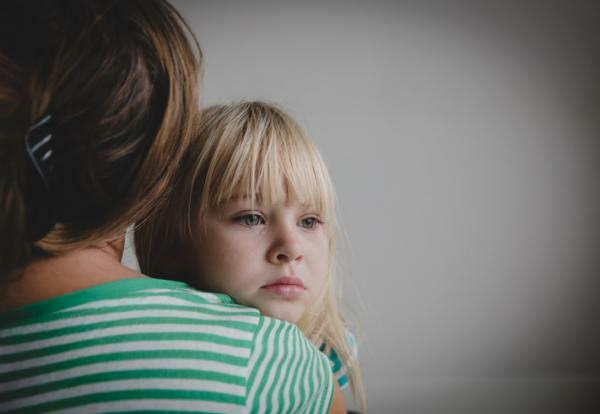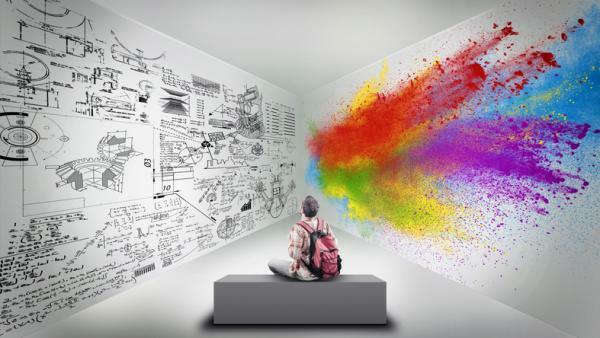
Attachment is understood as the affective bond that a child develops with her mother during early childhood. The type of attachment you develop will determine much of the social relationships you establish throughout your life. Become aware at the social level of the importance of this fact and promote parenting practices that promote secure attachments is a relevant preventive measure for physical, mental and health emotional.
In the next article we will talk about disorganized attachment, a type of attachment resulting from negative childhood experiences that develops maladaptive behaviors in the people who establish it. We will expose what it is, what are its consequences and how to treat it clinically.
According to J. Bowly's attachment theory, attachment is a instinctive behavior that occurs in the newborn with respect to his mother (or primary caregiver) as a biological survival mechanism. The baby seeks emotional protection in her mother that will allow her, later on, to safely venture out to explore the world. exist four types attachment:
- Secure attachment: shows separation anxiety but when the attachment figure returns, it calms down.
- Anxious-avoidant attachment: shows little anxiety in the face of separation and little interest in the return of the attachment figure.
- Ambivalent-resistant anxious attachment: shows anxiety about separation but when the mother comes back from her, she shows her anger, despite wanting to be with her.
- Disorganized-disoriented attachment: He is confused by the separation but does not approach the attachment figure as soon as he returns. It is the type of attachment that will be analyzed in this article.
Here you can see in detail the types of attachment and their consequences.
The disorganized attachment arises as a result of a childhood experience of confusion regarding the conduct of his parents. Their behavior is unpredictable, which generates in the infant feelings of uncertainty, fear and lack of coherence and order. This type of attachment usually develops in children who live in environments with intra-family violence, where violent behaviors alternate with others of affection or fear and insecurity in the parents themselves.
The consequences in the life of the child, adolescent or adult in cases in which a disorganized attachment is established are quite negative, due to the affective and psychological sequelae that it provokes in those affected. We will highlight the following:
- Aggressiveness: these are people who isolate themselves socially or establish toxic relationships and they remain on the defensive so that, in the least situation of conflict, they may respond aggressively. It is a response that reflects the expression of anger contained by the traumatic experience and, at the same time, the emission of the behavior learned in their environment as a conflict resolution measure.
- Low self-esteem: they internalize a discourse based on that emitted by their parents (mostly negative) and on their own deductions of "no-worth" as a way of justifying and rationalizing the mistreatment received. Here you can see the characteristics of people with low self-esteem.
- Behavior problems: they tend to manifest antisocial, aggressive and challenging behaviors as a result, as we mentioned, of the models learned and of contained anger
- Depression: result of all the experience, and despite their apparent strength manifested through their aggressiveness, they are people with a great inner affective emptiness. As a result, they often adopt addictive behaviors as a method of "emotional anesthesia." Here you can see tips to help a person with depression.
The disorganized attachment treatment it must contain a multidisciplinary intervention in the case of children and adolescents. A joint work of the family, school and social and therapeutic services will be necessary to achieve positive and lasting changes.
With regard to adults, J. Bowly proposes in his book "A secure base" Five tasks to include in the process of therapeutic work on attachment:
- Establish a climate of trust that allows the patient to start a safe relationship with the therapist. This trusting relationship will allow you to enter the darkest aspects of your life to explore the reasons that cause your current life difficulties.
- Accompany you in your awareness how you create and maintain your personal relationships today: what expectations you have of your behavior and of others; what behaviors it emits automatically and unconsciously (approaching, avoiding, blocking, etc); what responses it generates before the first results of the interactions (calm, fear, frustration and anger, flight, ...); etc.
- Analyze the relationship with the therapist himself, which will offer valuable information on how he creates relationships with attachment figures, a result of his previous experiences in childhood.
- Help you raise awareness how much your current thoughts, feelings and behaviors are conditioned by the relationship than in the past he had with his parents and with the discourse that he internalized about himself, about others and about the world from said happiness relationship.
- From the recognition of these mental schemes created from his childhood experience, look for alternatives that allow him heal those childhood wounds and create a new reality fairer with himself and with his possibility of personal development
These are complex therapeutic processes that generate defense mechanisms so as not to face pain and remain, at least, in what is known, that is, the comfort zone. However, and despite how hard the process may be, it is necessary to go through it if we want to eliminate the symptoms or clinical pictures that led us to the consultation (anxiety, depression, aggressiveness, antisocial behavior, etc). Is about heal the wound at the root so that it stops leading to future symptoms, conflicts or illnesses. Otherwise, the wound will seek the paths it finds to continue manifesting itself.
This article is merely informative, in Psychology-Online we do not have the power to make a diagnosis or recommend a treatment. We invite you to go to a psychologist to treat your particular case.
If you want to read more articles similar to Disorganized attachment: what is it, characteristics, consequences and how to treat it, we recommend that you enter our category of Clinical psychology.

Disorganized attachment: what is it, characteristics, consequences and how to treat it


